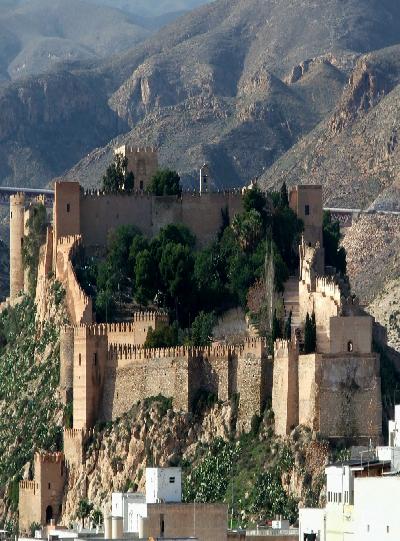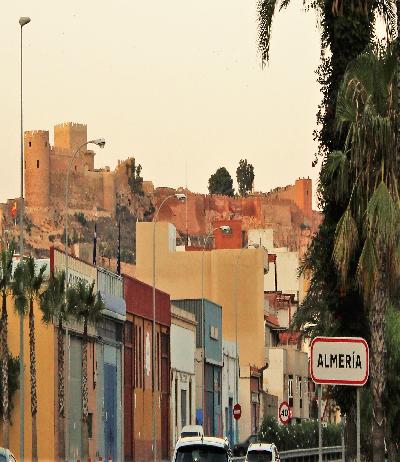aXCacfCAlmería is one of Andalusia's emerging destinations. An energetic port city with an illustrious past, until recently the city was generally overlooked by travelers, but recent efforts to beautify it are beginning to pay off. It has a beautiful center, highlighted by palm-lined squares and old churches and several interesting museums. Best of all, and the only reason for a visit, is its spectacular Moorish Alcazaba (fortress). The word Almería is an Arabic word that means mirror of the sea. Like many Andalusian cities, Almería retained its Arabic name after being recaptured by the Spanish. It is a medium-sized city by the Mediterranean Sea with a population of around 200,000 inhabitants. In its region is the Cabo de Gata Natural Park.
The Alcazaba:

La Alcabaza is probably the most famous and most visited attraction in the city of Almería. The name of this magnificent old fortress comes from the Arabic word al-qasbah, or fortified city. The construction of the Alcazaba began in 955 when Almería was named medina ("city") by the Caliph of Córdoba. This fortress was intended to be the seat of the local government, so houses, squares and a mosque were also built within its system of defensive walls and towers.
The Cathedral of Almería:
The Cathedral of the Incarnation of Almería is the seat of the Diocese of the city of Almería. A mosque stood on this site until it was destroyed by an earthquake in 1522. Two years after that, the construction of the Cathedral began in 1524. Completed almost 40 years later, the building's architectural style reflects a combination of Gothic influences and Renaissance. The two towers visible from the façade, together with the merlons and the protected paths, make it look more like a fortress than a cathedral. This is not an accident. These prohibited defensive features were intended to protect the cathedral from pirate attacks.
Castillo de San Cristóbal:
On the top of a hill north of the Alcabaza is a second fortified structure, the Castillo de San Cristóbal. The hill on which he resides is now called Cerro de San Cristóbal, but in the Muslim era of the neighborhood's history it was known as Cerro de Laham. The hill is surrounded by ancient ruins of protective walls built in the 11th century in the Kingdom of Jairán, and studded with ancient towers that reflect the eclectic military history of this area and the consequent changes in culture. Of the seven towers on this hill, you will see three squares built by ancient Muslim architects, and four semicircular ones built by Christian Templars after the Christian conquest of the city by Afonso VII in 1147. The Castle itself was built as a Muslim military fortress and it is now a historical ruin protected by the laws of the Spanish Heritage. This is a great place to examine the rich and varied layers of Almeria history and enjoy a breathtaking view of the modern city.
La Chanca neighborhood:

Part of Almería's old town today, this neighborhood was once known as the city's cave area. Even today, some people still live in these small, dark-colored houses that are partially sculpted on the rocky slopes of the Alcazaba. Many artists have chosen this area as the subject of their prints due to its particular and nostalgic beauty. On weekends, the tourist trains that leave from the Plaza de Emilio Pérez offer an easy and relaxing ride to enter and leave the Barrio de la Chanca, as well as to go to the neighborhood of the port if you want to continue the trip.
